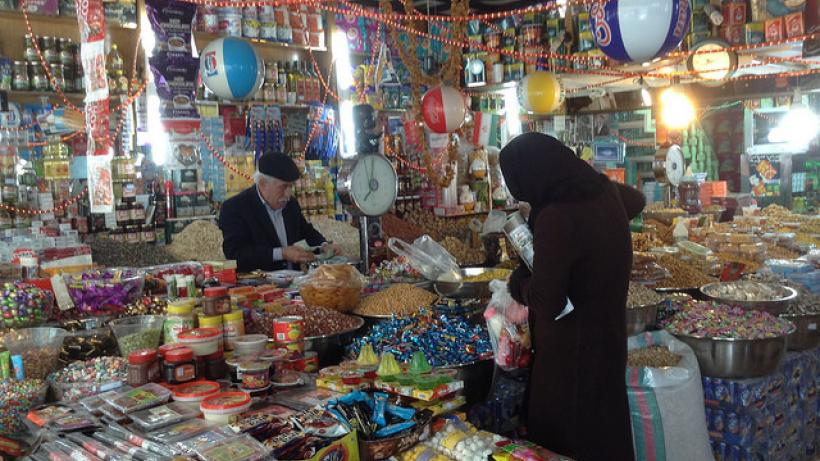
Do cash transfers make the poor work less?
Analysing the impact of cash transfers in Iran helps to dispel the myth that they encourage the poor to work less. Admittedly, these transfers occurred in the context of rising bread and energy prices, meaning the lessons are particularly important for oil-rich countries that subsidise energy.
In December 2010, Iran raised prices for bread and energy products by factors ranging from two to nine. To mitigate the pressure on household budgets, the government started a programme of cash transfers to the tune of $90 PPP per person per month. In 2011, the first full year of the programme, about 70 million received transfers amounting to 55% of the income of a minimum-wage worker with a family of four. For a large majority of Iranians these transfers more than compensated for the loss of spending power due to higher bread and energy prices.
Policy concerns
Iran’s programme provides a valuable opportunity to assess the impact of cash transfers on labour supply in a developing country, which is a serious policy concern. The idea that unearned income may reduce labour supply is very intuitive. If leisure is a normal good i.e. a good whose demand increases as income increases, its consumption would increase with unearned income. Although the intuition for this idea is strong, there is little empirical evidence to support it.
Banerjee et al. (2017) provide evidence from seven cash transfer programmes in developing countries that dispel the notion of the ``lazy welfare recipients." The idea that cash transfers cause workers to abandon their jobs has also been popular in Iran. A dim view of the poor’s taste for work has been apparently behind Iranian president Hassan Rouhani’s decision to discontinue the programme. This decision, which was announced in his proposed budget for 2018 last December and has been since overturned by Iran’s parliament, may have sparked urban protests last December and January.
Estimating the impact in Iran
Despite the importance of cash transfers for the poor, public opinion and policy about their potential impact on labour supply appears to be based on media anecdotes rather than solid evidence. Admittedly, rigorous evidence of impact is not easy to produce because of confounding factors. In 2012, less than a year after cash transfers had started to reach household bank accounts, the United States tightened international sanctions against Iran, sending its economy into a tailspin and reducing demand for labour.
In a recent paper, we take advantage of two sources of exogenous variation to identify the impact of the programme on participation in the labour force and hours of work of lower income households (Salehi-Isfahani and Mostafavi-Dehzooie 2017).
The first is the variation in the timing of participation caused by the fact that, for a variety of reasons, about 30% of households did not register in time to receive transfers during the first three months of the programme. Although they were able to register and receive transfers three months later, these households experienced a smaller positive income shock for the first three months of the programme, and their labour supply was therefore less likely to be affected by the addition of unearned income. The difficulty of obtaining consumption credit for the poor makes it even less likely that these households would borrow money to finance greater leisure. We use panel data to show that, during the three months in question, the change in the labour supply of those who received cash early and those who got it later were not different.
A second source of exogenous variation is in the share of cash transfers (net of the increase in energy expenditures) in household income. Although cash transfers for poor and rich individuals were the same, they represent a larger shift in the budget as a result of the programme (we call it the intensity of treatment). In 2011, they vary between 3.2% of income for the richest quintile to 44.3% for the poorest quintile. Again, using panel data and fixed effects, we estimate the causal effect of the transfers on participation and hours of work. The only significant effects we see are in the opposite direction, the most notable being for women and the self-employed. The positive effect for women may be because they are able to hire childcare or afford transportation, and for the self-employed may be support for expanding their business.
Implications in oil-rich nations
Our results have a positive message for energy subsidy reform policy in Iran and other oil-rich countries that heavily subsidise energy. Energy subsidies cause serious harm to the environment and the economy, and are highly unequal because they accrue disproportionately to the rich. The challenge in eliminating them is that energy accounts for a larger proportion of expenditure for the poor, so they stand to lose more from energy price reform. Riots after gasoline subsidies occur with great regularity, unless they are accompanied with assistance to the poor. Iran’s compensation scheme helped it launch drastic increases in energy prices in 2010 without social unrest. We now show that it did not harm incentives for work either. At least for the oil-rich countries like Iran that are in a position to turn energy subsidies into cash, this is a win-win solution.
Implications for Universal Basic Income
Finally, our paper has a positive message for the Universal Basic Incomes (UBI) initiative. Critics of UBI point to its disincentives for work. Because of its large size, Iran’s programme came very close to qualifying as UBI. What distinguishes Iran’s programme from UBI is its lack of disincentives for work when raising the funds for the transfers. Raising energy prices, as Iran did to pay for the transfers, arguably reduces economy-wide distortions.
References:
Banerjee, A, R Hanna, G Kreindler, B Olken (2017), “Debunking the stereotype of the lazy welfare recipient: Evidence from cash transfer programmes worldwide”, https://economics.mit.edu/files/10861
Salehi-Isfahani, D. and Mostafavi-Dehzooie M (2017), “Cash transfers and labour supply: Evidence from a large-scale programme in Iran”, Economic Research Forum, https://erf.org.eg/wp-content/uploads/2017/05/1090.pdf

